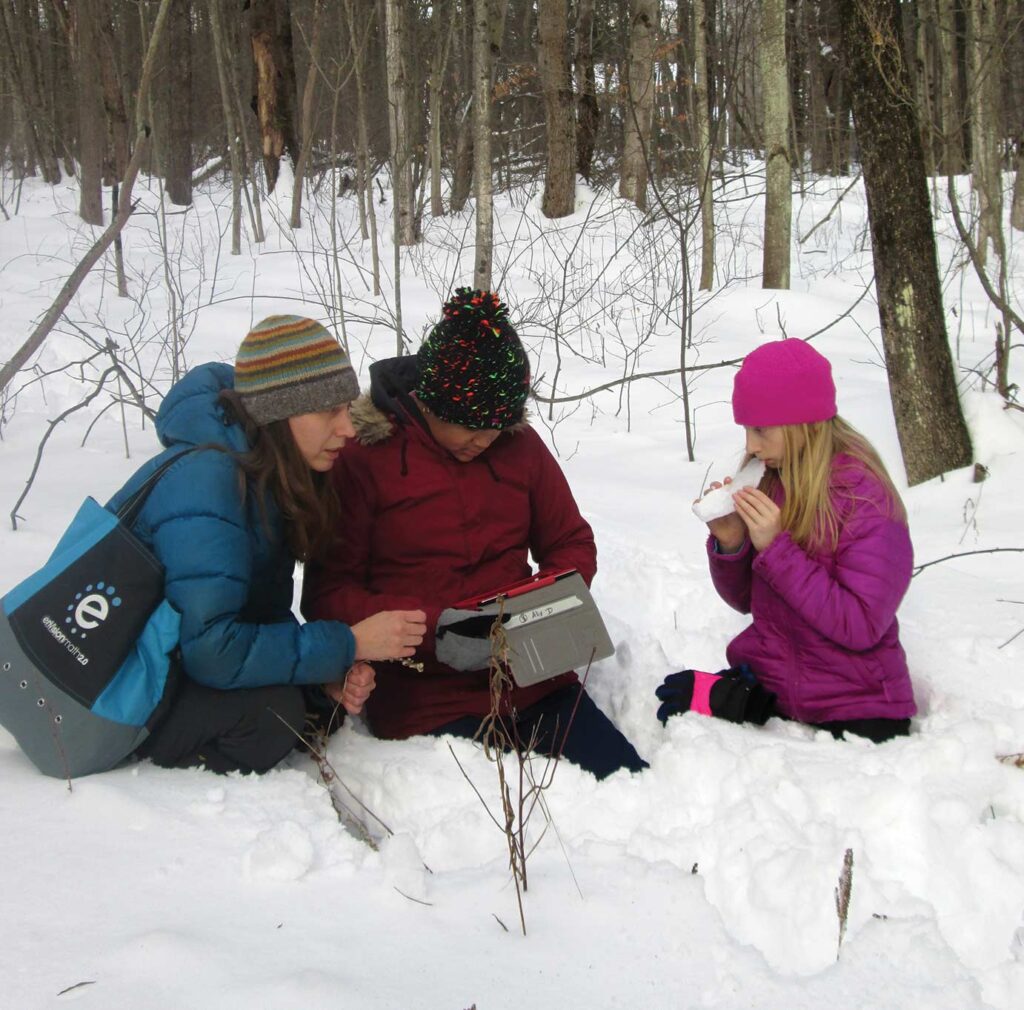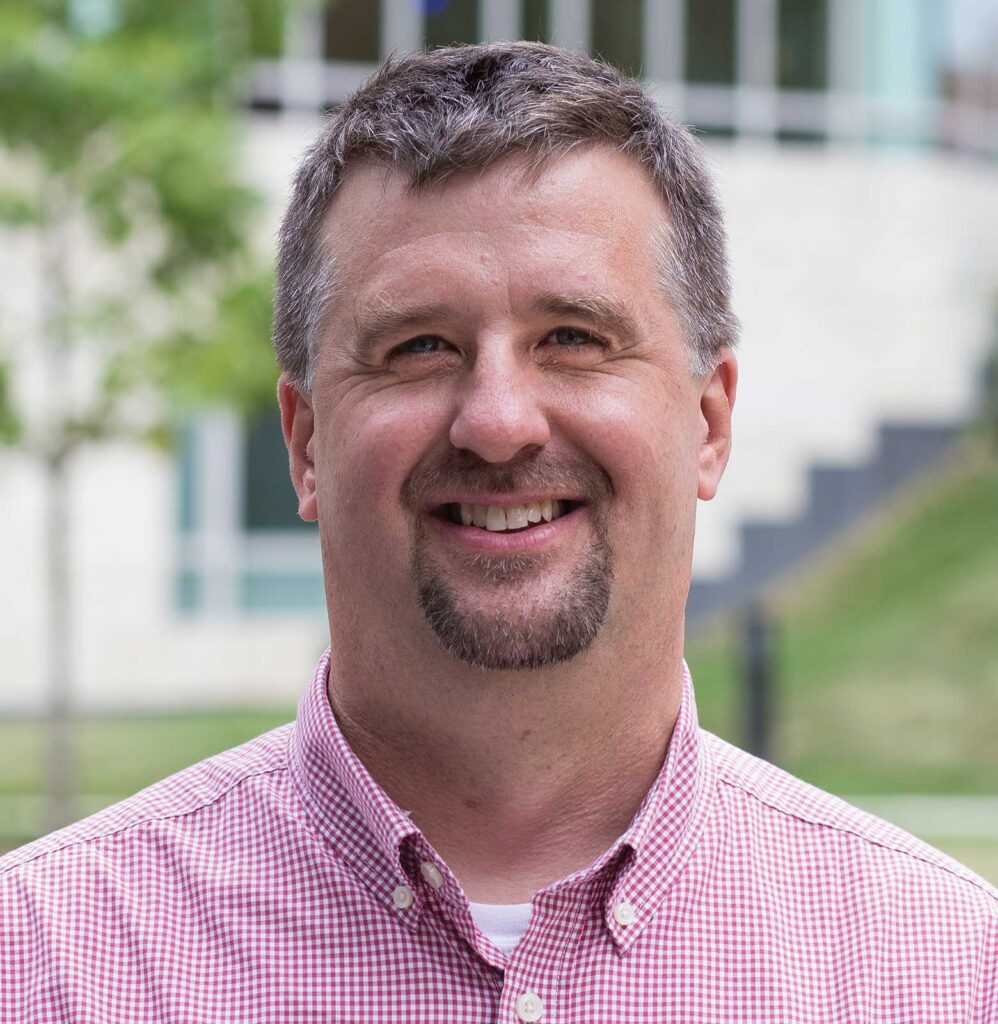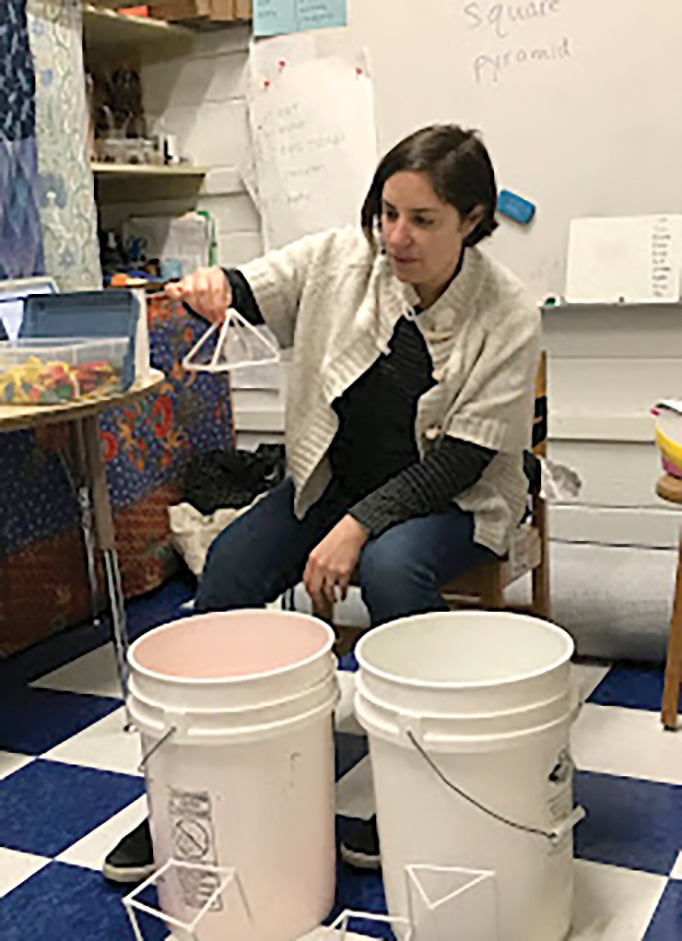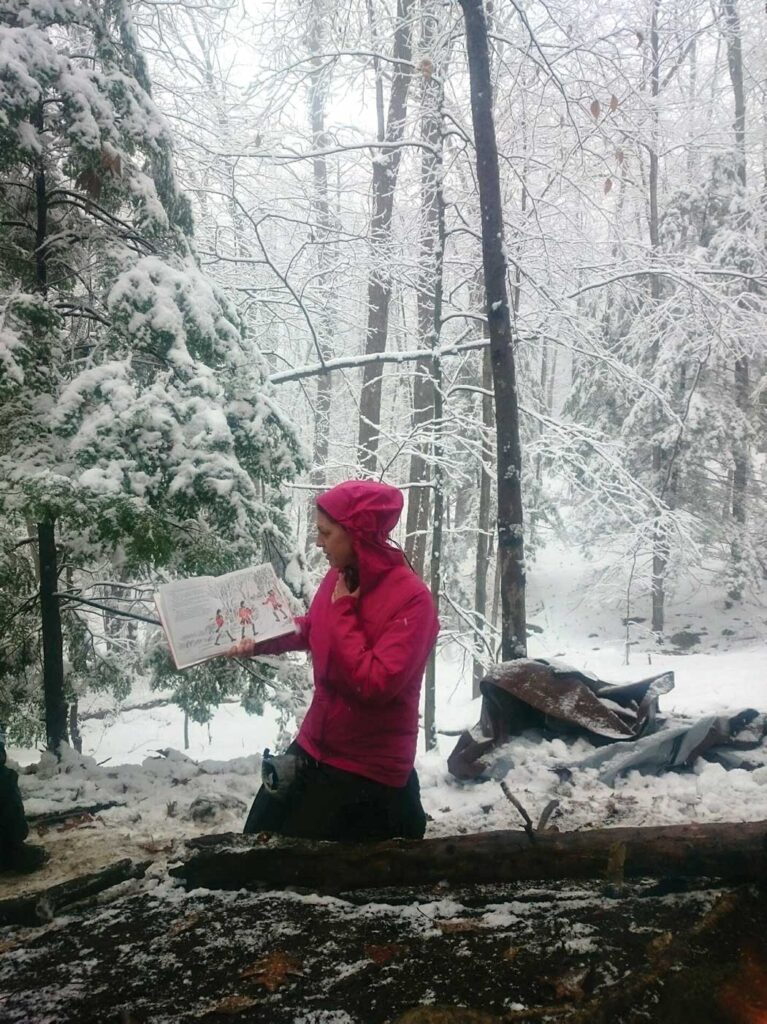Ninety miles northwest of Boston, the Connecticut River flows in its broad, meandering course and, near a particularly wide bend in the river, meets and is joined by one of its tributaries, the West River. The town that rises above that bend on the Vermont side of the river is Brattleboro. Across the river and a half-dozen miles up the road into New Hampshire lies Chesterfield.

The two towns differ in some ways—Chesterfield only has about 3,500 residents, while Brattleboro is more than three times as big—but they are alike in more ways. They each have histories stretching back to colonial times, each sits on land where Indigenous peoples have lived for millenia, each endure bitingly cold winters, and residents of both towns are rightly proud of their public schools.
One way in which their schools are similar is that they are deeply affected by their proximity to Antioch University New England (AUNE), which is only a little further up the road past Chesterfield, in Keene, New Hampshire. Dozens of teachers in the school districts that include Chesterfield and Brattleboro have received their training through AUNE’s teacher certification and Master’s of Education programs, and the districts frequently hire new graduates from AUNE, as they did this year. These teachers often share the social justice ideals of Antioch as well as some of the specific interests of AUNE’s Education Department: place-based education, nature-based education, integrated learning, inclusive classrooms, Waldorf approaches, and education that incorporates mindfulness.
As Laura White ’03 (Antioch New England, MEd in Elementary Education), who teaches at Chesterfield School, explains, having this many Antioch-trained educators in the area means that “many of them share a common vision for education.”
The School That Bought A Forest
White teaches at the Chesterfield School, where nature-based education has become a key part of pedagogy for many teachers after the school purchased 23 acres of land adjacent to the school, a tract with abundant forest mixed with open fields full of goldenrod and native grasses. The school has since developed two areas within the property into “outdoor classrooms,” where teachers can take their students to continue their studies outside.
At first, the set-up was primitive, says White: “A clearing among the trees with some benches built by a parent volunteer and a tarp for inclement weather.” This didn’t matter because, as she explains, “A classroom is defined by the activity that is taking place (learning), not by the appearance of the space.” Since then, the school has obtained a grant to build a timber frame pavilion in one outdoor classroom that, once it is completed, will make it easier to take kids outside in inclement weather.
White was one of the first teachers to really embrace the outdoor classrooms, but they have become a useful resource across the school. As she explains, “It’s become this organic movement within the school where a few teachers began using it and now most teachers are using it to some extent, many on a weekly basis. To the extent that we have to have a Google Calendar to sign up to use the spaces.”

Paul Bocko ’96, ’08 (Antioch New England, MS in Environmental Studies and MEd in Organization & Management), the Director of Antioch’s Center for School Renewal and faculty member in the Integrated Learning Elementary Education Program, says that innovations like these outdoor classrooms epitomize the Integrated Learning pedagogy that underpins AUNE’s programs. He describes integrated learning as the “antithesis of fragmented teaching by subject. It lends itself so well to nature- and place-based learning in that the most natural thematic work to do is to explore and investigate your immediate surroundings: playground, schoolyard, school building, downtown, old buildings, wetland, forest, and field.” This cultivates curiosity, and students find themselves deeply engaged in learning.
As Bocko says, “Through integrated thematic learning in these contexts, the nitty-gritty of the subjects and standards are taught and learned.”
White is happy to be able to pursue this sort of pedagogy at Chesterfield, where the school administration supports creativity and flexibility and the relative affluence of the community gives access to more resources, like the outdoor classrooms. But one of her deepest concerns is equity in education. She says that many teachers operate under
more restraints, “especially in poorer communities like Brattleboro which were penalized by No Child Left Behind for low test scores.”
In Vermont, Helping Students Thrive

At Brattleboro’s Green Street School, the societal barriers to students success are considerable. The K-6 school serves a population with real racial, class, and socio-economic diversity. While students come from every strata of socio-economic background, many are struggling in some way. Some families are struggling with addiction issues, others with homelessness. Brin Tucker ’04 (Antioch New England, MEd in Elementary Education), who serves at Green Street as an instructional coach, explains that “a great percentage of [our students] live below the poverty line and have experienced significant trauma.”
In light of this, the Brattleboro schools work to be a force for good in their students’ lives. In addition to offering instruction that has shown some of the highest academic growth in the state of Vermont, Green Street also has a 100% free universal meal program, a full-time social worker, a full-time clinician for mental health services, four therapy dogs who come to visit the school, a food pantry, and laundry machines in the basement for students in need.
One of the best ways to positively influence students’ lives is to build relationships with trusted and caring adults.
One way that Brattleboro schools do this is by bringing student teachers into their classrooms through an unusually intensive internship program connected with AUNE’s education department.

A handful of interns from AUNE have participated in the program every school year since the program was founded four years ago. They are typically placed in one classroom for the fall semester and another for the spring. Tucker is the site supervisor for the program at Green Street. She administers the program with Orly Hasbani ’02 (Antioch New England, MEd in Elementary Education), the site supervisor at the Academy School, and Deb Kardane ’04 (Antioch New England, MEd in Elementary Education), who established the program and oversees it.
Kardane explains that the program benefits all those who participate in it: the students, who get additional attention and support; the cooperating teachers, who have an opportunity to think deeply about their practice; and the interns themselves, who are immersed within the culture of a school as more than just an intern. Says Kardane, “They are a staff member, right off the bat. They participate in all of our district-wide professional development, school-based orientations, and work with teacher-teams right from the start.”
The program has succeeded on many fronts. And to date, five interns have been hired into permanent positions in the school district, further carrying the enthusiasm and progressive values of Antioch to the students of Brattleboro.
Bringing More Classrooms Outside
The successes that resulted from creating outdoor classrooms at Chesterfield School are also having broader effects in the world. This is largely due to an Antioch-backed film, Turning School Inside Out, that was released earlier this year.
The twenty-minute documentary, which was filmed and directed by Chris Hardee ’79 (Antioch New England, MS in Environmental Studies), follows the purchase of the 23 acres, the decisions and efforts put into making it more usable, the impacts it’s had on the community, the experiences of the students who are studying on the land, and the different approaches teachers are using now that they have this resource.
It’s a beautiful film, and it’s already being used as part of a larger effort to bring place- and nature-based education to educators across New England. Ellen Doris, an Antioch faculty member, says, “The film was an important collaboration, and it is now supporting AUNE’s ongoing efforts to encourage nature- and place-based learning in schools.”

One leader in this effort is Liza Lowe ’09 (Antioch New England, MEd in Elementary Education), who now teaches as an adjunct at AUNE. She lives in Chesterfield and has two school-age children, and she is featured in the film in part because she was an early participant in the Outdoor Education Committee. But her advocacy goes beyond her involvement in the Chesterfield School’s decision. In 2013 Lowe founded Wild Roots Nature School, a licensed nature-based program for students ages two to seven, and now she runs Inside-Outside, Antioch’s
growing network of nature-based educators.
Says Doris, “As affiliate faculty at AUNE, Liza Lowe has developed Inside-Outside: Nature-based Educators of
New England as a project of AUNE. Teachers in Chesterfield and Brattleboro are active in Inside-Outside, along with a growing number of teachers throughout the Northeast region and elsewhere. Inside-Outside has been an important source of inspiration, mutual support, and professional
development for teachers, particularly during the pandemic.”
The pandemic has, in some ways, stymied the release of the film, disrupting planned screenings at springtime film festivals and canceling a tour that would have brought the film to educators around New England.
But the pandemic has also presented an opportunity to advocate for using outdoor classrooms as part of a strategy for how to safely hold in-person classes during the coronavirus pandemic. Says Lowe, “Part of what we have been working on since April and May is to help people think about taking learning outdoors this coming fall in response to COVID.”
While these efforts are ongoing, the connections between Chesterfield and AUNE are already transforming learning for hundreds of students.
A Lasting Impact On Teachers
And back in Brattleboro, the internship program is having long-lasting impacts, too. Says Orly Hasbani, the program’s other site coordinator, “I find that the teachers who went through the teacher training program at AUNE are hard-working and creative. They also often bring an excitement for place-based learning and project-based teaching. So I think that the AUNE education program has really enriched the education of our children in the area.”She herself carries into the Academy School’s classrooms many of the integrated learning techniques she learned as an Antioch student, like project-based learning.
“Whether it be map-making or baking in science class, there are so many things I learned about at AUNE that have continued to be vehicles for me in which to teach content,” she says.
And the intensive internship program, in which cooperating teachers and interns regularly engage with and reflect on what they are learning from each other and through the process, means that even teachers who were not trained by Antioch are being exposed to its values and methods. All of which, in turn, helps Brattleboro’s students to study in a thriving school.





